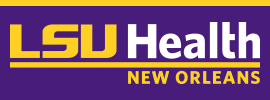Characteristics of Verified and Designated Burn Centers
Document Type
Article
Publication Date
3-26-2025
Publication Title
Journal of Burn Care & Research
Abstract
Burn Center (BC) verification is a rigorous process designed to ensure optimal care for burn injury patients. The American Burn Association (ABA) lists 135 verification criteria, yet only 50-60% of BCs are verified. This study assesses the operational, financial, and clinical disparities between verified burn centers (VBCs) and non-verified burn centers (nVBCs) in the U.S. the U.S. The study was conducted using The Databases for Optimal Resources for Injury Care (DORIC), a centralized database developed from the American Hospital Association (AHA), American College of Surgeons Committee on Trauma, ABA, all fifty United States' (U.S.) Departments of Health, the National Injury Resource Database (NIRD), and claims databases, through collaboration with BData, Louisiana State University Health Sciences Center (LSUHSC), and University of New Orleans (UNO). Data were analyzed for quality and statistical rigor by a data analyst and a biostatistician. The study demonstrated no significant differences in hospital size, location (urban/rural), hospital bed number, or burn intensive care unit bed number between VBCs and nVBCs. However, significant differences were identified in total hospital discharges and revenue. VBCs had more patient discharges (median 22,212 vs. 15,639; p=0.019) and generated significantly more total revenue (median $994,945,750 vs. $652,390,948; p=0.014), Medicare revenue (median $171,016,940 vs. $83,739,527; p=0.0023), and inpatient revenue (median $2,070,789,977 vs. $1,347,440,093; p=0.0125) compared to nVBCs. These disparities in discharges and revenue underline the financial and operational benefits of BC verification. Our findings provide valuable insights to guide policy and decision-making in burn care, aiming to improve care quality, accessibility, and equity.
PubMed ID
40138699
Recommended Citation
Ivanko, Anastasiya; Lovick, Elle; Miles, M Victoria; Danos, Denise; Schoen, Jonathan E.; Kearns, Randy; Phillips, Bart; Murata, Erica; Holcomb, John B.; Phelan, Herb A.; and Carter, Jeffrey E., "Characteristics of Verified and Designated Burn Centers" (2025). School of Medicine Faculty Publications. 3671.
https://digitalscholar.lsuhsc.edu/som_facpubs/3671
10.1093/jbcr/iraf035


